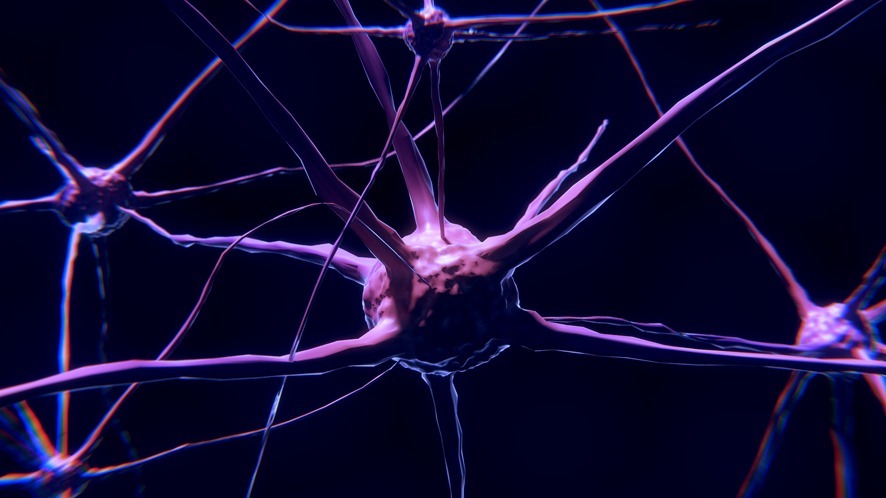Overview
Early trauma & toxic relationships
What does early trauma have to do with destructive, toxic relationship behaviors? And how can one overcome this to find new, healthy, and fulfilling relationships? A central aspect here is reconnecting with one’s own feelings and inner self – creating a healthy relationship with oneself.
Traumatic experiences, in any form, can complicate or even disrupt our relationship with ourselves. Many of us may carry some level of relational trauma – even if we do not strictly meet the criteria for a post-traumatic stress disorder diagnosis. This article provides a thoughtful and open exploration into the deeper layers of trauma, uncovering possible mechanisms and identifying potential starting points for healing.
We all have fears, things we avoid, or wounds we’d rather not revisit. This is natural. Yet, ironically, our resistance to these experiences can keep them alive within us – a concept further explored in this article.
Subjectivity of our perception
When we experience something deeply painful or unsettling in our interactions with others, our mind often seeks explanations. We, as humans, tend to feel secure when our thoughts find grounding—typically in a story we tell ourselves about ourselves or others. This story is built on our perceptions, stored experiences, and limited information. Our interpretations and narratives are always subjective and incomplete. Over time, we develop personal views about the world, life, and people, shaping even our values into frameworks that reflect individual perspectives and experiences.
Our stories and explanations are limited, subjective, and often distorted. But how often do we remind ourselves of this fact?
Our experiences and perceptions operate within a subjective framework that we carry, often unconsciously, from our past experiences. This concept, explored in theories of constructivism, is also foundational in psychological approaches like behavioral therapy and psychoanalysis. In behavioral therapy, the concept of organismic variables—our personal learning history—shapes our thoughts, feelings, and behaviors. Psychoanalysis, for example, describes introjection, the internalization of specific experiences.
In this way, we internalize what we have experienced. Beliefs, conditions, and rules that have been significant to us shape our subjective reality, influencing our thinking, feelings, and actions.
Trauma | Neuropsychological & emotional effects
If we’ve experienced trauma in earlier times, it leaves its traces within us. During such moments, our system goes into a state of emergency. Our emotional center—the limbic system—becomes highly activated. Often, a person in this state enters a kind of foggy, detached trance, also known as dissociation.
Dissociation is an initial protective strategy: the brain’s control center—thalamic areas—is overwhelmed and can’t fully process what’s happening. It’s simply too much. Parts of the experience get “split off” (or suppressed from our conscious awareness and memory) to shield the system.
As a result, these events are often only fragmentarily remembered and stored in our memory in pieces. Within biographical memory, traumatic events are rarely recalled fully or clearly. Yet, the associated pain, confusion, fear, helplessness, disgust, and similar feelings remain intense, causing the emotional center to feel “on fire.” People affected by trauma often have a lower threshold for emotional reactivation. Certain triggers can bring these past feelings back to the surface instantly.
Reliving these feelings is aversive—trauma-related emotions stress the system, making them fearful and distressing. Much of the work following trauma is then spent on avoiding these emotions. Internally, re-experiencing these emotions often feels as threatening as the original trauma itself.
Triggers are stimuli connected to the trauma and can sometimes be completely neutral in themselves (like a banana, a particular smell, etc.). However, it’s the subjective experience that links these stimuli with a sense of threat (an associative response). Long after the traumatic event, these triggers may continue to bring up the same emotions.
To protect from re-experiencing this stress, a complex web of protective and avoidance strategies often develops over time, usually without conscious awareness. The aim is clear: avoid these painful feelings at all costs! Fear arises from…
Protective behavior after trauma & "foreign fielding"
Protective behaviors often include certain patterns in thoughts, emotions, interactions, and actions that seem to help us today in managing pain and trauma-related feelings. Control becomes essential. It’s crucial to understand that establishing such strategies back then was vital! This was a natural process, ensuring emotional, psychological, and spiritual survival during and after traumatic events. This should be recognized and understood.
What we learned as a protective strategy has since become embedded in our system and evolved.
For example, if we once avoided a particular person (like a father) because it felt safer (e.g., avoiding harm), we might now avoid others with certain traits that remind us of this person (such as a similar beard or expressions). This reaction is a form of generalization (a specific form of conditioning). In extreme cases, this avoidance might generalize to men as a whole. Certain locations might also be avoided (like a specific train station) if they hold an association with danger (e.g., someone threatening). This can lead to life restrictions (like avoiding train rides altogether).
Protective behavior tends to become increasingly restrictive. It may also serve as a strategy against the fear of losing control. Avoiding distressing feelings or the dissociation state (or trance) mentioned earlier can be part of this. Although dissociation may seem to provide short-term relief by disconnecting from the experience, many people feel helpless in this state, limited in their ability to act and be present, resulting in an unpleasant sense of losing control.
To counter this sense of losing control, people often turn to controlling the seemingly controllable aspects of life: routines, household tasks, or bureaucratic responsibilities. This often extends to a strong effort to control their own emotions. This need for control can lead to further protective behavior, which I refer to as “foreign fielding”:
Emotions are tightly controlled (which requires effort) because one’s own field of personal experience may feel like unsafe territory (a potential emotional “explosion” risk). As a result, a protective mechanism might involve focusing on the issues, problems, and stories of others. Shifting attention to someone else’s emotional-energetic field can temporarily relieve stress, because attention towards them means control of what happens there. Traumatized people can feel more in control by reducing the external world and its effects on one’s inner world.
Please don’t misunderstand: we’re all interconnected and genuinely care about each other as humans. This is in alignment with our true nature. However, by “foreign fielding”, I mean strolling in the emotional-energetic fields of others while losing connection with oneself. Possibly automatically it leads to avoidance of one’s inner world, or one’s own emotions. This can result in a strong identification with others’ fields, which may have negative consequences, especially in interpersonal relationships.
Co-Narcissism, Trauma & Self-Alienation.
If the realm of one’s own feelings is perceived as threatening, over time, emotional self-alienation may develop.
Limited awareness and connection to one’s own feelings affects inner clarity and decision-making. Emotions act as our inner compass, signaling what is important and meaningful to us. When this inner connection is weak or absent, essential components of a holistic, self-aware, and confident life experience are missing. Consequently, our relationship with ourselves may lack health and stability.
When combined with “foreign fielding” described earlier, this opens the door to destructive relationship patterns (see article). By avoiding our own needs and emotional world, we may unconsciously use another person as a proxy for our own unaddressed needs. This can be a form of projection where we seek in others what we find intimidating within ourselves, perhaps a longing for closeness, care, or unconditional love. We might notice traits in others—unresolved or wounded parts—that we have yet to address in ourselves.
As time passes, our behavior and perceptions begin to align more closely with what we see (or believe we see) in the other person. Even if we sense some truth in this, we risk losing sight of our own genuine feelings and needs. The clarity, healthy self-connection, and conscious awareness of our inner world may remain dormant, leaving unexpressed desires unsaid.
Unconsciously, we try to fulfill our unmet needs through the other person, often without realizing they are indeed our own needs. This can bring with it an unspoken expectation that the other person will intuit and respond to these needs—just as we believe we do for them. A silent agreement emerges, but without the other person’s awareness.
A disconnection from one’s own inner life begins to form, leading eventually to a painful awakening. This awakening often arrives when we realize the other person isn’t who we thought they were, or when they break this silent contract. Such moments of awakening frequently mark the beginning of the end in an empathic-narcissistic relationship dynamic (learn more).
In these moments, we often find no clarity amidst the turmoil. If we return to the start of this article, it may help to recognize something crucial: This painful awakening highlights how we may have perceived the other within the boundaries of our own history (which can happen in any challenging relationship breakup!). The illusion fades. The image we projected onto the other person no longer holds—and this hurts. Our own authentic inner world surfaces.
Suddenly, emotions and pains we had skirted around or tried to control erupt like steam from a geyser. With this intensity, the pain of a dissolved illusion can strike us.
Was it all an illusion? Not entirely. Our perception is limited, but not fully mistaken. In our stories about others, we tend to capture only what resonates with us, often seeing only an aspect of the person—the part that fits within our framework of ideals and beliefs.
What we can do: We can acknowledge our subjectivity, practicing honesty and mindfulness towards ourselves and others. This allows us to “bring our feelings home” and end the internal struggle. Feeling familiar connections with others is a beautiful moment where genuine connection can emerge.
For authentic connection, however, we first need a strong connection to ourselves. Only by honestly addressing what remains unresolved within us can we build healthy relationships that reflect this inner strength. Though it might feel easier to focus on someone else, caring about them instead of navigating our own emotional landscape, this can be a form of self-deception. Ultimately, we are always trying to save ourselves through the other, trying to reconcile our own inner conflicts.
7 Consequences of foreign fielding in relationships
- Your counterpart gradually becomes felt as a part of you. This does not refer to authentically lived partnership, but rather to a symbiotic entanglement rooted in an absolute need.
If the other person represents your inner, unresolved, traumatic part, you will experience a sense of dependence. A healthy boundary towards this person will feel hurtful to you, and you may hesitate to establish it. Your inner world will feel as if it all depends on how well your counterpart is doing and how reliably you can save them. - You are distancing yourself from yourself and your inner world. You may abandon yourself (which may feel both painful and traumatic) in your perception and in your priorities. You begin to feel like a part of the other. You may oscillate between feeling safe and belonging, as though you’ve found your place (while avoiding your own issues), and then experiencing existential fears of loss or feelings of being engulfed (which leads to ambivalent behaviors).
- In this encounter, everything thus revolves around your performance and fulfilling a role you feel obligated to play. Whether by constantly searching for solutions or compromises, returning repeatedly to meet the other’s needs, or working on yourself (not for yourself, but to improve the relationship), you are always trying to optimize. By doing so, you unconsciously support the belief “I am not good enough!“ This is not about sincere compromise where both partners are willing and motivated to work on themselves for a mutual purpose, but rather about self-sacrifice, one-sided effort, and imbalance.
- Due to your emotional fusion with your counterpart, you will increasingly lose your self-identity and experience less of your own, deep-seated trauma. It can feel as if someone is lifting a backpack that weighs tons off you. It’s as if you are stepping into a new life, and you might attribute this relief to your partner. However, it is more likely that this is merely relief and distraction from what remains unresolved within you. But it does remain! Your new self is only partially present. Upon closer examination, this sense of relief is intertwined with performing, renouncing personal needs, and self-alienation (see point 3.). Over time, you may find yourself facing a dilemma: “Me or the Other?“ The illusory relief you experience will last only until your own needs, values, and desires start to surface—and they eventually will!
- Through the mechanisms of projecting onto others, you cross a boundary between self and others. And let’s be honest—this often happens without permission. What your counterpart wants or wishes to resolve remains their responsibility. Each person decides for themselves what they want to face, work on, and address in life.
If you enter an encounter as a savior and feel compelled to relieve the suffering of another on their behalf, you unconsciously give your “okay” to blurred boundaries. Consequently, you will likely experience boundary crossings yourself and attract people who unconsciously align with this dynamic. - If you unconsciously need another person to avoid facing inward, thereby avoiding feelings of fear, sadness, or pain, to perhaps vicariously “save” yourself through them—then your counterpart will likely sense this. Without necessarily understanding the exact reason, they may respond with discontent, feel a lack of appreciation, or resist your attempts – even if they are funny, lovingly or supportive. This dynamic can also result in another possibility:
- That you consistently attract people who, in turn, need you to avoid confronting their own unresolved trauma. People whose patterns align with yours and who engage in similar ways (see the article on empathic-narcissistic magnetism for this).
This dynamic of boundary crossings can trigger a sense of lack of appreciation in you. You may find yourself attracting people who, like you, are disconnected from their complex wholeness and inner universe (albeit in different ways).
As a result, you may only ever relate to a fragment or fragments of your counterpart that resonate with your own fractured parts and aspects.
Navigating defense & avoidance | the path towards healing
The original trauma state—with its layers of deep pain, fear, overwhelming emotions, and mental trances—drives affected people to seek out solutions to stop feeling these overwhelming sensations.
Over time, secondary emotions like guilt or shame can surface from trauma-rooted core beliefs. These lead to misunderstandings or mental programming that may foster self-blame for the trauma. Often, this need for relief is tied to the person involved, especially if survival seemed to depend on the relationship (“It’s my fault I was treated that way; I must have been too demanding as a child”). These secondary emotions can overshadow the primary emotions that need to be faced and understood. In response, people may develop complex, multi-layered defense mechanisms to protect themselves.
Each avoidance / defense behavior reinforces the emotional trauma by blocking access to these core feelings, even if the behavior was essential at the time. Avoidance / Defense mechanisms keep us from experiencing distress, though not every uncomfortable feeling stems from them. Listening to our intuition and gut feeling is crucial to keeping boundaries with harmful situations. This distinction can be difficult, especially after years in unhealthy relationships, which may dull the voice of intuition over time.
As this article shows, defense behaviors often aim to avoid feeling deep pain. We all develop unique strategies and solutions for this. Some may try to control their environment or others by manipulating or altering facts to avoid feeling vulnerable (see article on the narcissistic wound).
Others may turn to self-doubt, caregiving, or conformity to avoid rejection and stay agreeable to others (see article on empathic wounds). In both cases, these behaviors aim to avoid reliving old pain. This keeps the underlying beliefs unexamined, still active, and continuing as a distorted blueprint from the trauma.
My hope is that this article might encourage letting go of the need for blame and judgment. Initial feelings of anger and rage are valid. They create space and help reconnect with personal needs, but they are secondary emotions. Beneath them lies an unspoken grief and a deep-rooted pain, stemming from the understanding that both you and the other person may not have had the capacity to act differently.
It’s time for forgiveness, especially self-forgiveness. Staying stuck in accusation keeps focus on others, avoiding self-reflection, and prolongs defense patterns. Conflicts with others are often mirrors of our inner struggles. We fight parts of ourselves through our interactions with others.
Acceptance of subjectivity | letting go of our stories
A filter is always a limitation of what actually exists. Our perception shapes what we see, think, and feel based on what we are familiar with. What we recognize as known falls within the scope of our narrative, making it seem valid. This can lead us to cling to our stories and believe them to be true.
When something makes sense, we experience a sense of calm and feel as though we have reached a standstill. The world fits into a manageable framework for us, allowing stirred-up emotions to settle. They do not settle because we are right, but because we believe we are right (whatever that means).
When we insist on being right, we also reinforce the stored beliefs and behavioral patterns that relate to the external challenges, our inner fears, and the actual pain. Everything within us will remain preserved and untouched.
When we treat our subjectively experienced reality as universally true, we also accept our beliefs as truth. This affects our self-image and the threat posed by our feelings, as well as our misprogramming. In our desire to be right, we continually construct a replication of the past. We play the same roles, alternately projecting our needs, desires, hurts, motives, or perceived threats onto others based on our interpretations. We become projectors and reactors instead of free agents. To put it bluntly, we become slaves to the fear of our own feelings and existence.
The role we once adopted to cope with our original trauma, self-doubt, fears, and past circumstances has served us well. We can be grateful for that. However, now is now. A filter is still a filter, and a story is just a story.
Awareness of mechanisms | self-liberation
It’s important to be aware that early trauma affects our thinking, feelings, behavior, and internalized beliefs. The key point is identification—that is, to consciously resolve the subjectivity of our own perceptions and interpretations.
We need to observe and reflect on our own unconscious patterns with a sense of loving acceptance. We can always ask ourselves whether what we tell ourselves about life, ourselves, our fellow human beings, and their motives is really true.
Or if our story simply sounds familiar. Are we truly honest with ourselves regarding the blueprint we have created? We should also question whether we confuse our subjective narrative with a universal truth and get more aware of what it truly is: just our personal story.
We may ask ourselves what we are running away from inside. What scares us? Perhaps we notice when we project our own feelings onto someone else’s situation. When do we lose contact with ourselves? Do we give up, and if so, for what reason? We should also reflect on when we feel helpless, hurt, guilty, sad, angry, or afraid, and then embrace these feelings with loving acceptance.
We can become more aware of how our experiences have shaped us. Understanding is something every person desires! However, this understanding cannot come from outside unless we cultivate it from within.
States of exception can be used to learn how to internally regulate ourselves. This will give us the confidence that we can handle whatever arises within us or has been there for a long time. We can also learn to view our triggers as helpful cues—they may indicate when an unhealthy dynamic is present, putting us at risk of falling into old patterns. Then, we can make a conscious choice for our own well-being.
If we wish to embark on this journey, we can ask for help along the way. It’s important to clearly articulate our needs and stand by ourselves, embracing everything we are. We should consider what is truly important in life, which values we express and live by, and what we genuinely want. We can learn to distinguish between escaping old feelings and listening to the voice of our intuition, which grows louder the more we pay attention to it. It becomes clearer when we make a firm commitment to ourselves and start to reclaim our feelings. We can begin to open up slowly and gently, knowing that we can establish healthy boundaries. This allows us to differentiate between ourselves and others, affirming that we are always with ourselves and that we have the capacity to be.
Free preliminary talk?
Once again: In the end, we all only wish to be happy. Understanding the effects, patterns, and mechanisms of trauma can be crucial. Recognizing maladaptive programming may serve as a first step toward achieving self-honesty and forging new, healthy, self-determined paths.
May this article help you to do so!
Everything starts with you!
All my love,
Yours Kristina







